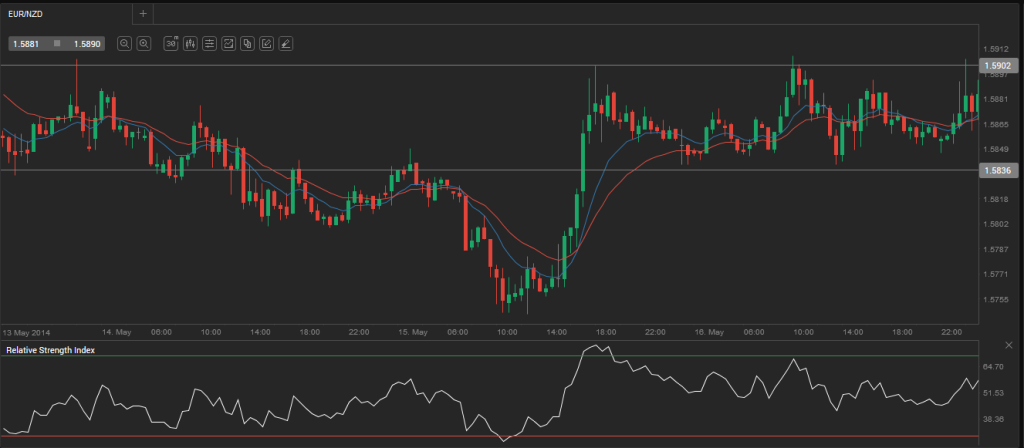During Fridays trading session EUR/NZD traded within the range of 1.5845-1.5911 and closed at 1.5865.
Fundamental view
The New Zealand input PPI probably rose 0.4% in the first quarter, following an unexpected 0.7% drop in the previous quarter.
The quarterly PPI expresses changes in price levels of the manufacturing sector of the economy. It compares the output index (measuring changes in the price received by producers), and the input (which measure changes in the cost of production). Input indexes measure changes in the price, excluding labor costs and revaluation. These include the cost of materials, fuel and power, transport and communications, commissions contractors, rental or purchase of land, buildings, vehicles or production facilities, business services, insurance benefits. The index does not include salaries and wages (covered by the Labour Cost Index), capital expenditures (measured from Capital Goods Price Index), real estate taxes, royalties agreements, costs of government patents, tolls, bad debts and donations. Incoming indexes do not measure the complete changes in production costs. The structure of the index is periodically updated to overcome the above limitations.
Statistics New Zealand is scheduled to release an official report at 22:45 GMT on Sunday. A higher-than-expected reading would have a bullish effect on the kiwi, as the NZ dollar is best known.
Technical view
According to Binary Tribune’s daily analysis, in case EUR/NZD manages to breach the first resistance level at 1.5902, it will probably continue up to test 1.5940. In case the second key resistance is broken, the pair will probably attempt to advance to 1.5968.
If EUR/NZD manages to breach the first key support at 1.5836, it will probably continue to slide and test 1.5808. With this second key support broken, the movement to the downside will probably continue to 1.5770.






